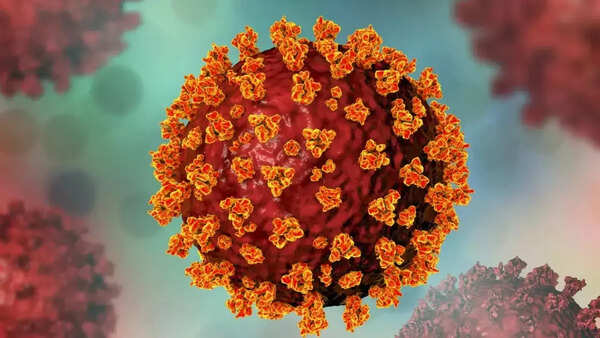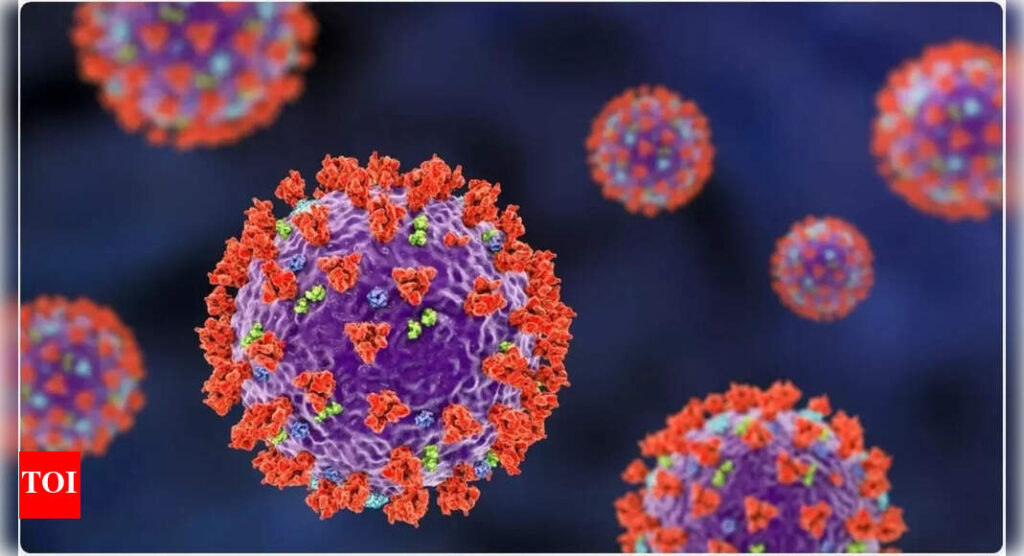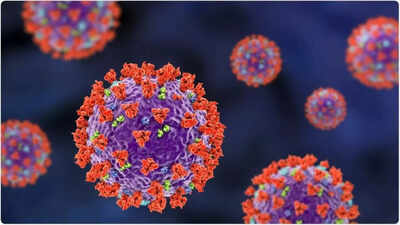A newly identified variant of Covid-19, named NB.1.8.1, has been recorded in the United States of America, following a surge in cases observed in China. Data from the Centers for Disease Control and Prevention (CDC) indicates that this strain has been discovered in international travelers at various US airports.
The expansion of the new strain:
Recent reports have also emerged of the strain being detected in the community, suggesting it may be spreading locally.In certain regions of Asia, NB.1.8.1 has been associated with a rise in Covid-19 cases. Notably, the percentage of severely ill respiratory patients in China with Covid-19 has increased from 3.3% to 6.3% over the last month, and the rate of A&E patients testing positive for the virus in Chinese hospitals has skyrocketed from 7.5% to 16.2%. Additionally, Taiwan has experienced a 78% increase in hospital admissions due to Covid.In Hong Kong, where hospitalizations have reached a 12-month high, authorities are urging residents to wear face masks in public transport and crowded settings once more. The World Health Organization (WHO) has stated that, while NB.1.8.1 has a greater ability to bind to human cells—potentially making it more transmissible—there is currently no evidence to suggest that it causes more severe illness or is better at evading immunity compared to other variants.

How did the new strain reach the US?
The new Covid-19 cases identified in the US have primarily originated from travelers coming from nine countries: China, Japan, Vietnam, South Korea, Taiwan, Thailand, France, the Netherlands, and Spain. Testing for the variant was conducted on individuals sampled between April 22 and May 12, as part of a program allowing voluntary nasal swabs at airports.Health officials have also reported instances of the variant from Ohio, Rhode Island, and Hawaii, alongside cases in California and Washington states dating back to late March and early April. Despite these new cases, there has been no corresponding surge in positive Covid-19 tests in the U.S., with the latest data showing a 12% decrease in test swabs detecting the virus.

Early symptoms of NB.1.8.1 to watch out for:
There is no indication that NB.1.8.1 is more harmful than earlier strains. According to early data from Chinese researchers, the NB.1.8.1 variant is not more adept at avoiding the immune system than other strains that are becoming more prevalent, but it is more capable of attaching itself to human cells, which may indicate that it is more contagious.Individuals infected with the NB.1.8.1 variant have reported a range of symptoms, some of which differ from those associated with earlier strains of the virus. Common early symptoms include:Persistent low-grade hyperthermia: Rather than a high fever, many individuals experience a persistent low-grade increase in body temperature (between 37.6°C and 38.1°C) without the typical sweating or rapid breathing associated with fever. This condition, known as hyperthermia, may indicate an issue with the body’s thermoregulation mechanisms. Upper respiratory symptoms: As with other Omicron subvariants, NB.1.8.1 commonly presents with symptoms such as sore throat, cough, runny nose, and mild fever.Gastrointestinal distress: Some individuals have reported nausea, loss of appetite, and gastrointestinal discomfort.Neurological symptoms: There have been instances of individuals experiencing headaches, dizziness, and difficulty concentrating.Fatigue and malaise: Extreme fatigue and muscle weakness have been noted, making daily activities challenging for some individuals.Sleep disturbances and anxiety: Reports from the UK have highlighted that some individuals infected with the JN.1 variant, a closely related strain, experienced anxiety and trouble sleeping.

Preventive measures and recommendations:
Given the potential for NB.1.8.1 to spread rapidly, especially among international travelers, health authorities recommend the following preventive measures:Vaccination: To reduce the risk of severe illness, ensure that vaccinations are up to date, including any recommended boosters.Mask-wearing: In crowded or enclosed spaces, wearing masks can help reduce the transmission of the virus.Hand hygiene: Regularly wash hands with soap and water or use hand sanitizers to minimize the risk of infection.Monitoring symptoms: Be cautious about any of the symptoms mentioned above and seek medical attention if they develop.Isolation: Individuals experiencing symptoms should self-isolate to prevent spreading the virus to others.
If any of these symptoms appear, seek medical attention.


